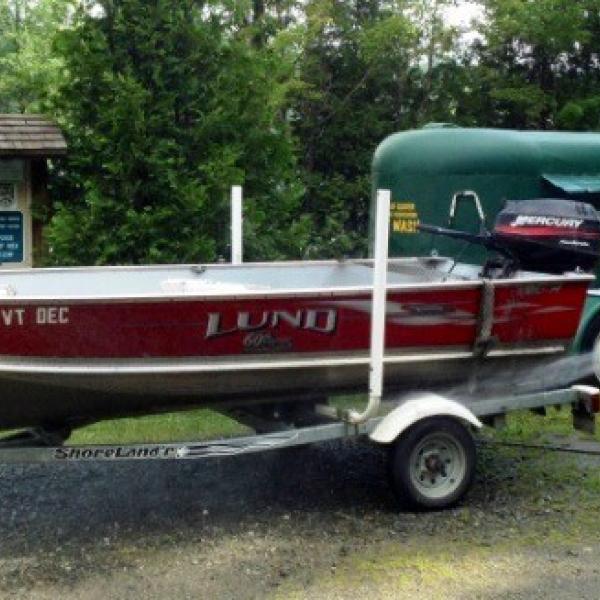
Watercraft decontamination stations for aquatic invasive species popping up across Vermont in 2016
For the past 13 years, Shadow Lake in Glover has had the only hot water, high pressure watercraft decontamination station in the state. The Shadow Lake Association in partnership with the Town of Glover has operated this unit since 2003, and has encouraged washing of all watercraft before launching into the lake. Their main goal has been to prevent the introduction of Eurasian watermilfoil in the lake, but the lack of other invasive introductions into the lake can also be partly attributed to their dedicated work
Beginning in 2016, Shadow Lake will not be alone in their decontamination efforts. At least six other watercraft decontamination stations will begin operation around the state, with the ultimate goal being to stop the spread of aquatic invasive species (AIS) into our treasured rivers, lakes, and ponds. Supported by federal grant funds, the Lake Champlain Basin Program (LCBP) and the Vermont Department of Environmental Conservation (VTDEC) have teamed up to purchase and staff four decontamination stations for the 2016 boating season. Two will be located full-time at high-use Lake Champlain public accesses: Shelburne Bay and the new John Guilmette access (South Hero). Two others will be portable, and will be used strategically around the state to provide watercraft decontamination and further educate anglers, boaters, and other water users of the threats of AIS.
A couple of other local entities are also developing plans for watercraft decontamination stations for 2016. The Town of Morgan has received a grant from VTDEC to help fund the establishment of a station at the public access on Lake Seymour, and the Town of Williston has received a grant from LCBP for a similar set-up at Lake Iroquois. Staff for all decontamination stations will be trained by experts from VTDEC and the LCBP. Training will be similar to that received by AIS technicians in western states, where watercraft decontamination techniques have been employed for years to curb the spread of zebra and quagga mussels. Vermont’s efforts will also mirror those at Lake George, NY, and in the Adirondack Park, where decontamination programs have also been started recently.
Hot water, high pressure decontamination systems have been shown to be the most effective in removing and/or killing a host of aquatic invasive species. Spiny waterflea, a relatively new invasive species in Lake Champlain, has eggs that resist chemical treatments. With their strong byssal threads, zebra mussels can be nearly impossible to remove from watercraft without high pressure capability. Both species, however, are vulnerable to exposure to high temperatures. Hot water (140˚ F or more) is also a reliable method to reduce viability of Eurasian watermilfoil fragments. For these reasons, basic decontamination protocol entails treatment of all high risk areas of a watercraft (those confirmed/suspected to harbor AIS) with 140˚ to 150˚ F water for a minimum of 10 seconds. The temperatures and methods used are effective against a host of different species, but are safe for watercraft hulls, motors, pumps, and other equipment when used correctly.
As always, watercraft inspections and decontaminations are a free, courtesy service offered to boaters. Typically, the inspection process takes 2-5 minutes, with little inconvenience to boaters as they launch or retrieve their watercraft. Based on the initial inspection and other factors, the greeter or lake steward may then suggest one or more decontamination techniques.
For example, if a boater is pulling their watercraft out of Lake Champlain and plans to immediately take the boat to Lake Eden, which has no confirmed AIS, then full decontamination would be suggested. If a watercraft arrives at Lake Iroquois that was last in Lake Erie and has a livewell full of water, then at the very least the greeter on duty would suggest decontamination of that livewell. On the other hand, if a watercraft arrives at Lake Seymour, which also happens to be where it was last in the water, then no decontamination would be warranted or suggested.
Decontamination training will now be part of annual workshops for the Vermont Public Access Greeter Program, which are scheduled throughout the spring. If you have any questions about the greeter program, watercraft decontamination stations, or aquatic invasive species in general, please contact AIS biologist Josh Mulhollem with VTDEC.
Article Credit: Josh Mulhollem, Vermont Department of Environmental Conservation
Photo courtesy of the Shadow Lake Association